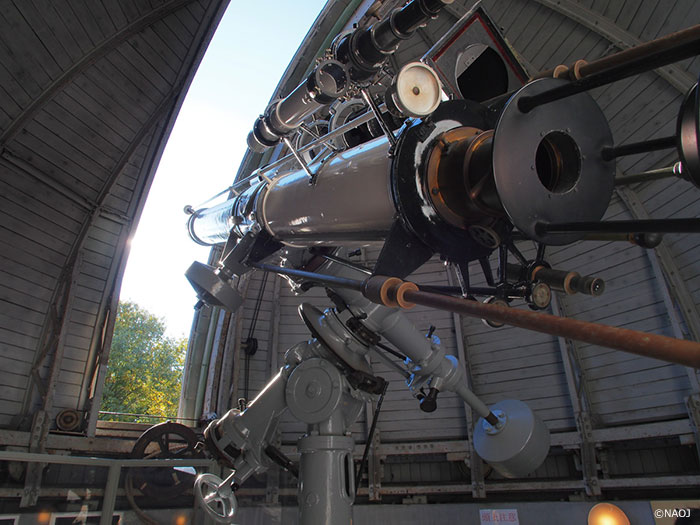60 Years Observing the Sun
Photo・

| Date | Fall 2012 |
|---|---|
| Location | NAOJ Mitaka Campus |
| Photographer | Yutaka Iijima |
| Credit | National Astronomical Observatory of Japan |
| Terms of Use | This image can be used without permission for research presentations, conferences, and school classes. In other cases, it cannot be used without prior permission. If you would like to use it, please fill out an application. In the case of commercial use, a photograph usage fee might need to be negotiated with the photographer, Mr. Yutaka Iijima. |
The 20-cm Telescope Dome stands in the Visitors’ Area of Mitaka Campus. Built in 1921, it is the oldest observation dome remaining in the campus. It preserves a 20 cm diameter refracting telescope. The telescope’s equatorial mount has a clockwork drive mechanism utilizing a governor: gravity pulls down hanging masses which move the telescope drive to track celestial objects. This telescope conducted solar observations spanning 60 years starting from 1938. Having retired from the frontlines of astronomy, this veteran telescope still stares at the Sun anytime there is a solar observation session.
The Sun is the most familiar celestial object and the only star whose surface activity state we can observe in detail. Solar activity goes through cycles of vigorous activity and sparse activity with a period of roughly 11 years. Additional longer cycles of gradual changes are also known. Several centuries of sunspot observations have elucidated these fluctuations in the Sun. From 1938 until 1998, changes in the sunspots and white dots which appeared on the surface of the Sun were observed by making sketches of an enlarged image of the Sun projected by the 20 cm refracting telescope. Some of these drawings are displayed in the 20-cm Telescope Dome to bear witness to the old observations. After sketch observations using this telescope ended, it was succeeded by CCD observations using the 10 cm Sunspot Telescope, and observations continue to this day. Solar fluctuations, which have many effects on our life here on Earth, are an important research theme.
Author: Seiichiro Naito (Public Relations Center, NAOJ)